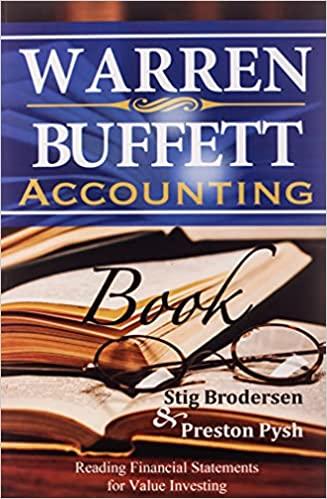Question
You are considering investing $1,000 in a complete portfolio. The complete portfolio is composed of Treasury bills that pay 5% and a risky portfolio, P
You are considering investing $1,000 in a complete portfolio. The complete portfolio is composed of Treasury bills that pay 5% and a risky portfolio, P, constructed with two risky securities, X and Y. The optimal weights of X and Y in P are 60% and 40%, respectively. X has a return volatility of 25%, and Y has a return volatility of 30%. The correlation between X and Y is -0.2. If you decide to hold a complete portfolio that has a return volatility of 15%, how much should you invest in the Treasury bills?
| $687 | ||
| $220 | ||
| $1,000 | ||
| $130 |
There are only 3 assets to invest in, all being risky. AAPL has an expected return of 10% and volatility of 15%. MSFT has an expected return of 12% and volatility of 18%. TSLA has an expected return of 20% and volatility of 30%. Investors can form risky portfolios out of these 3 assets. Which one of the following statements is correct?
| On the expected return-volatility space, the set of all feasible risky portfolios is a curve that goes through the 3 risky assets. | ||
| 100% invested in MSFT is an inefficient portfolio. | ||
| 100% invested in TSLA is an efficient portfolio. | ||
| On the expected return-volatility space, the set of all feasible risky portfolios is a curve that does not go through any of the 3 risky assets. |
Which of the following statements is correct, according to portfolio theory?
| An investors risk aversion level should determine the capital allocation to the risky portfolio. | ||
| The optimal risky portfolio is one with the highest expected return. | ||
| An investors risk aversion level should determine the optimal risky portfolio. | ||
| All investors will invest in the same optimal complete portfolio. |
You are considering investing $1,000 in a complete portfolio. The complete portfolio is composed of Treasury bills that pay 5% and a risky portfolio, P, constructed with two risky securities, X and Y. The optimal weights of X and Y in P are 35% and 65% respectively. X has an expected rate of return of 14%, and Y has an expected rate of return of 10%. To form a complete portfolio with an expected rate of return of 14%, you should invest approximately __________ in the risky portfolio. This will mean you will also invest approximately __________ and __________ of your complete portfolio in security X and Y, respectively.
| 78%; 27%; 51% | ||
| 25%; 45%; 30% | ||
| 140%; 49%; 91% | ||
| 50%; 25%; 25% |
You are considering investing $1,000 in a complete portfolio. The complete portfolio is composed of Treasury bills that pay 5% and a risky portfolio, P, constructed with two risky securities, X and Y. The optimal weights of X and Y in P are 60% and 40%, respectively. X has an expected rate of return of 14%, and Y has an expected rate of return of 10%. If you decide to hold 70% of your complete portfolio in the risky portfolio and 30% in the Treasury bills, then the dollar values of your positions in X and Y, respectively, would be __________ and _________.
| $150; $100 | ||
| $420; $280 | ||
| $360; $240 | ||
| $100; $150 |
Step by Step Solution
There are 3 Steps involved in it
Step: 1

Get Instant Access to Expert-Tailored Solutions
See step-by-step solutions with expert insights and AI powered tools for academic success
Step: 2

Step: 3

Ace Your Homework with AI
Get the answers you need in no time with our AI-driven, step-by-step assistance
Get Started


